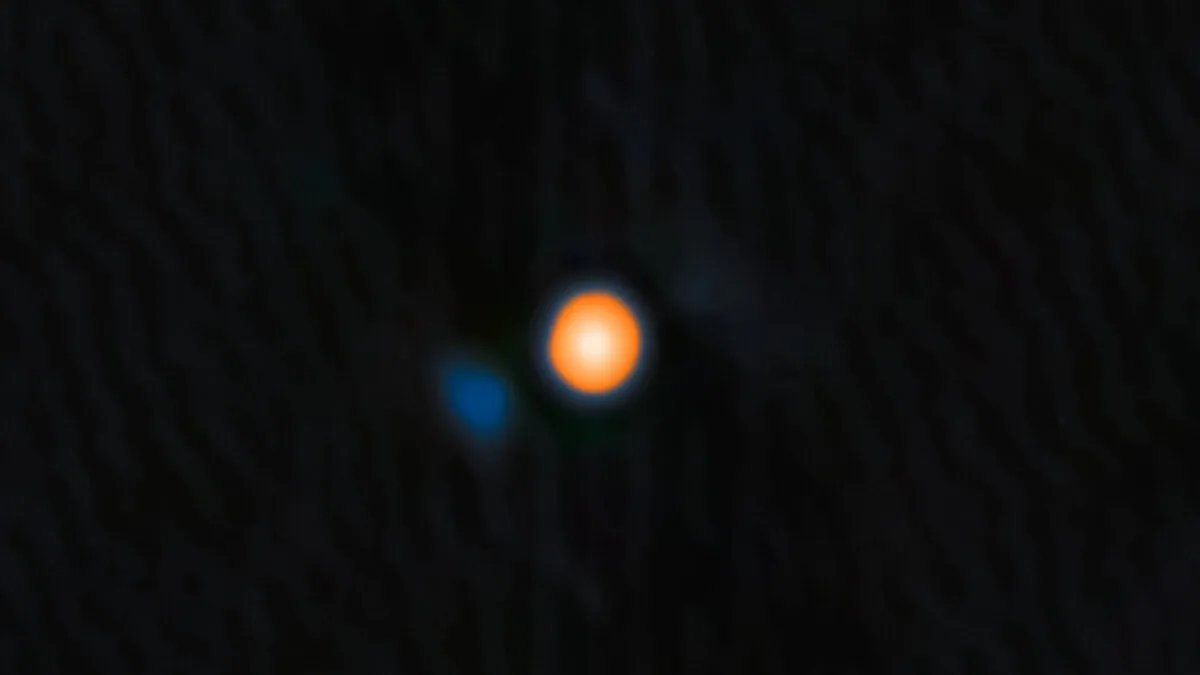
In 2024, astronomers speculated that Betelgeuse, the prominent red supergiant star, might possess a stellar "buddy." This hypothesis arose from the need to explain the unusual glowing patterns exhibited by Betelgeuse. After extensive research and numerous attempts to locate this companion, astronomers from NASA's Ames Research Center have confirmed the existence of a smaller star, affectionately nicknamed "BetelBuddy." This remarkable discovery opens new avenues for understanding the dynamics of this iconic star.
The newly identified companion star, which boasts a mass approximately 1.5 times that of our Sun, likely influences Betelgeuse's gravitational field and the cosmic dust surrounding it. Such interactions contribute to the distinctive behavior of Betelgeuse, making it appear to undergo an extended dimming every six years—an anomaly not typically seen in other stars of its class. Steve Howell, the lead astronomer on the discovery team, remarked, “Papers that predicted Betelgeuse’s companion believed that no one would likely ever be able to image it. This now opens the door for other observational pursuits of a similar nature.”
To uncover this celestial companion, astronomers utilized the Gemini North telescope in Hawaii and employed a technique known as speckle imaging. This method involves very short exposure times, which effectively eliminates distortions caused by Earth's atmosphere, allowing researchers to capture high-resolution images of the companion star. This advanced imaging facilitated the identification of key characteristics, including its mass and temperature.
Interestingly, "BetelBuddy," as the researchers affectionately named it, is believed to have formed around the same time as Betelgeuse. This comparison highlights the stark contrast in their evolutionary paths; while Betelgeuse is nearing the end of its life cycle and may explode into a supernova within the next decade, its companion star remains in the early stages of stellar evolution, yet to ignite hydrogen at its core.
Betelgeuse, with a mass ranging from 10 to 20 times that of the Sun, has a significantly shorter lifespan compared to its lighter companion. This disparity is a fascinating aspect of stellar evolution, emphasizing how mass influences a star's life cycle. Given Betelgeuse's proximity to Earth, it has been the subject of intense study for centuries. Observational data indicate that its brightness fluctuates on a cycle of approximately 400 days, with an additional secondary cycle lasting around six years.
Variable stars like Betelgeuse are not uncommon, yet astronomers have long grappled with the reasons behind its extended dimming period. It is essential to differentiate this from the "Great Dimming" event that occurred from 2019 to 2020, which was likely due to the star ejecting a significant cloud of dust, obscuring its brightness. The recent discovery of BetelBuddy provides a credible explanation for the years-long dimming and brightening pattern of Betelgeuse, enhancing our understanding of its complex behavior.
Despite the excitement surrounding this discovery, astronomers predict that Betelgeuse's powerful gravitational pull will eventually consume the young companion star within the next 10,000 years. However, this won’t be the last opportunity to observe BetelBuddy. Astronomers anticipate that in November 2027, the young star will pass within the detection range of telescopes, offering a unique chance to study its characteristics further.
In conclusion, the confirmation of Betelgeuse's companion star not only answers longstanding questions about the supergiant's behavior but also paves the way for more extensive astronomical research. As we continue to explore the cosmos, discoveries like these remind us of the dynamic and interconnected nature of stars within our universe.